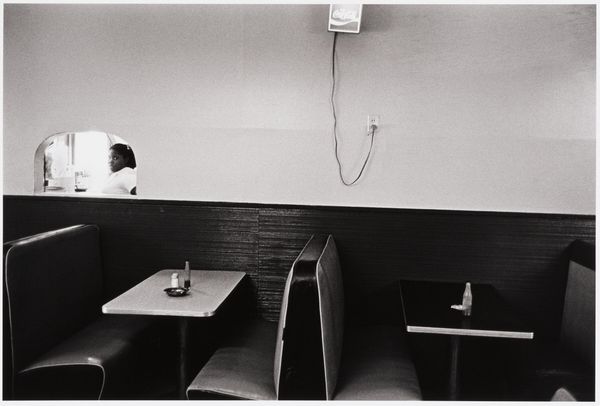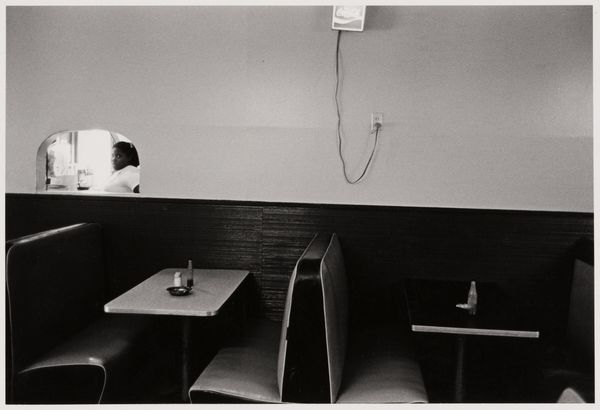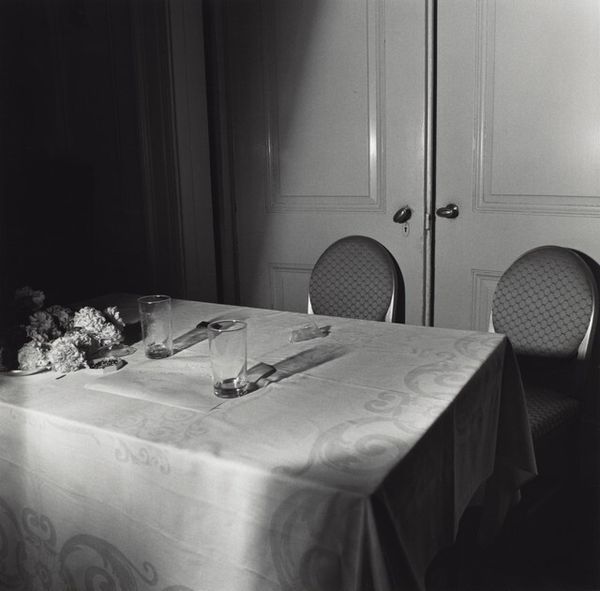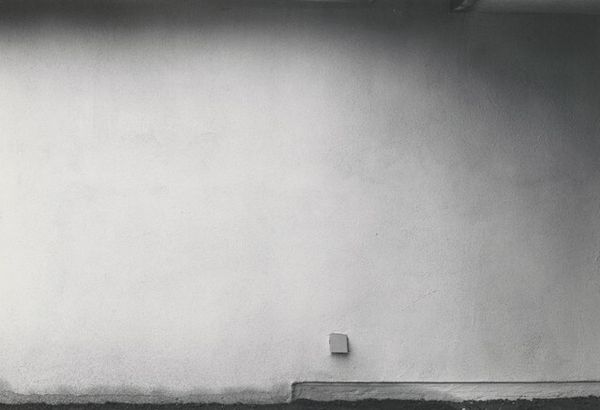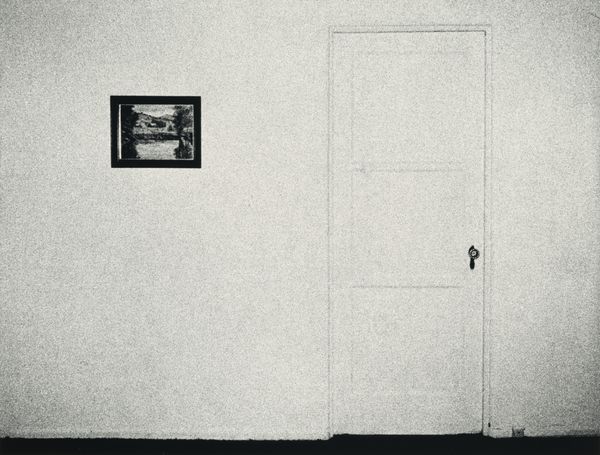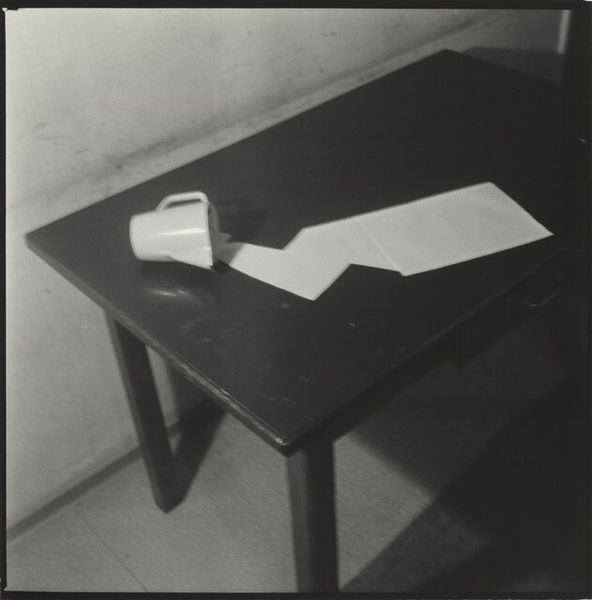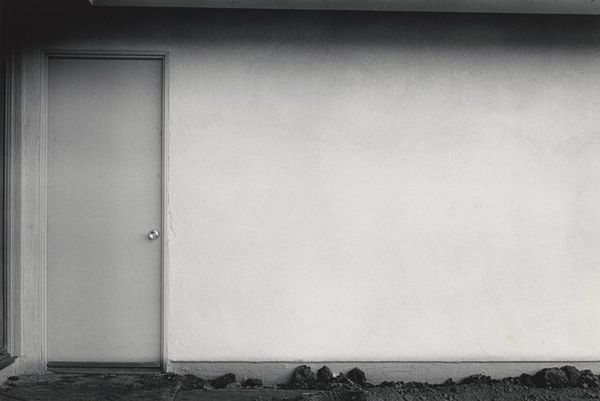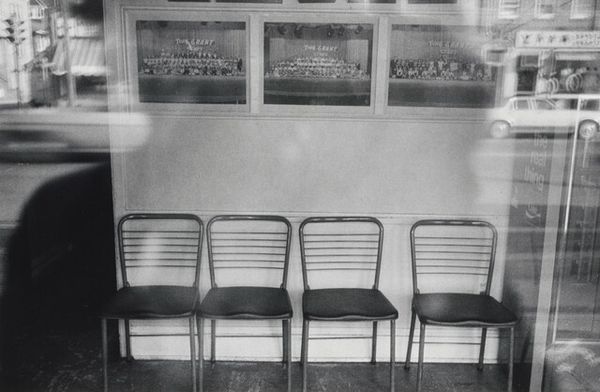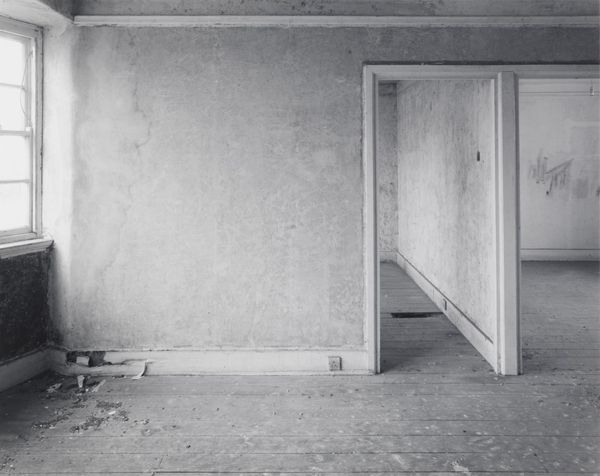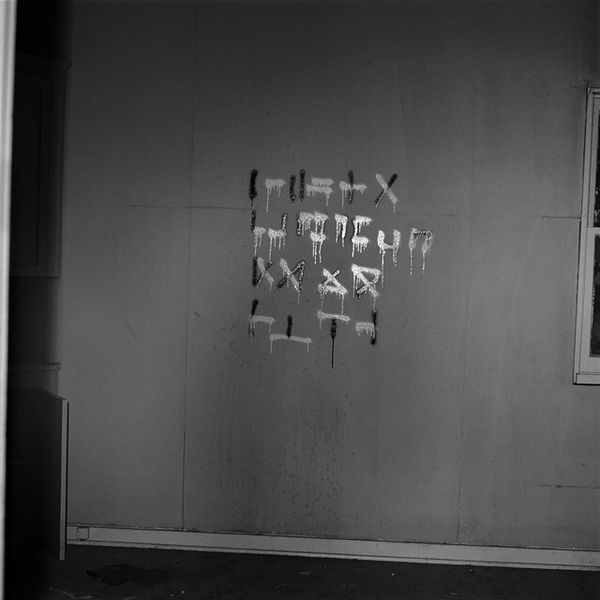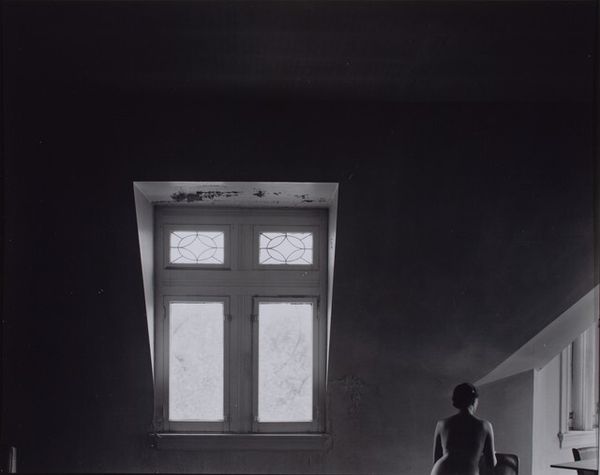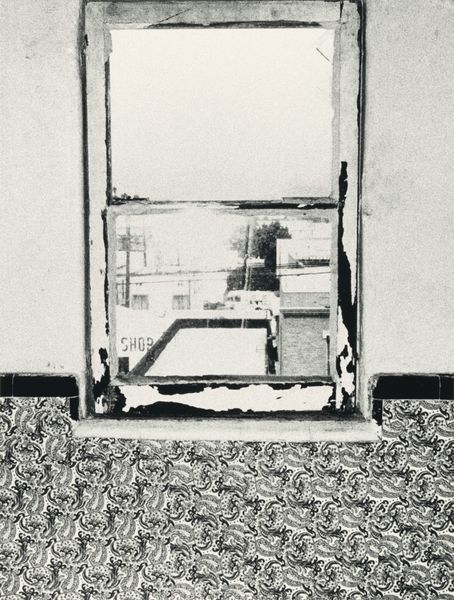
photography
#
still-life-photography
#
black and white photography
#
street-photography
#
photography
#
black and white
#
monochrome photography
#
monochrome
Copyright: Vivian Maier,Fair Use
Curator: This evocative black and white photograph is titled "Winnetka, IL (Interior with Telephone), April 1968" by Vivian Maier. Editor: My first thought is quiet desolation. There's a sense of suspended animation about the objects on that table: gloves, a half-empty soda bottle, a hefty-looking book... it suggests someone briefly interrupted, maybe called away by the very telephone looming on the wall. Curator: Indeed. Maier was known for capturing everyday moments, often charged with a sociological dimension. The stark simplicity here speaks volumes about domestic life in middle-class America at the time. Consider the dated wall-mounted telephone – a clear marker of both class and era. It dictates connection in a literal, physical way that seems antiquated today. Editor: I'm struck by the textures. The stark, almost brutalist design of the phone against the slightly grubby wall… and the fluted glass of the window hints at something beyond while obscuring a direct view. I am especially interested in her ability to give material substance and narrative to a seemingly innocuous moment. The play of light suggests she’s being strategic here; framing the telephone, as a type of tool of control to emphasize a particular reality for women, perhaps confined within the space. Curator: It’s also interesting to view this in the context of Maier's own life. Working as a nanny, she had access to these intimate spaces of affluent homes. This photograph becomes a subtle commentary, not just on middle-class life but potentially on her position within it – both insider and observer. The very act of photographing asserts her presence and authorship. Editor: Absolutely, and considering her labor as a nanny, these objects –the soda bottle, the book, the work gloves –speak volumes about leisure and work, highlighting a socioeconomic difference she may have experienced firsthand. It underscores the physical labor inherent in domestic service through suggestion and absence. Curator: So, what appears as a simple interior is laden with historical and social nuance, revealing layers of American life in the late 1960s through Maier's observant lens. Editor: Yes. By meticulously constructing her visual record through composition and light, the quotidian transforms into an incisive artifact to reveal something truly haunting.
Comments
No comments
Be the first to comment and join the conversation on the ultimate creative platform.
